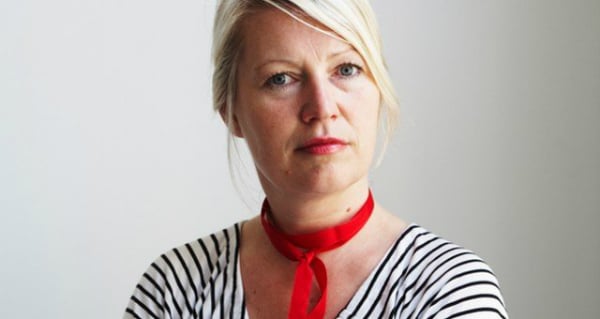Art & Exhibitions
11th Gwangju Biennale Reveals Participating Artists
It's Asia’s oldest contemporary art biennial.

Photo via: Clocktower
It's Asia’s oldest contemporary art biennial.

Carol Civre

The Gwangju Biennale has revealed the list of participating artists in the upcoming 2016 edition, opening on September 2 and running through November 6. The 66-day exhibition will be dedicated to the exploration of the state and function of art. Curated by Binna Choi, artistic director Maria Lind, and assistant curators Azar Mahmoudian, Margarida Mendes, and Michelle Wong, the 11th Gwangju Biennale focuses around the question “what does art do,” and aims to answer this question in both present and future contexts.
The curatorial team is also interested in active public interaction with the exhibitions and hopes to facilitate this both through activities, screenings, reading groups, and seminars as well as through the Biennale’s main venue in the Gwangju Biennale Exhibition Hall, which is one of the city’s focal sites. The emphasis on public participation aims to create a link between Gwangju’s local community and the international public.
Founded in 1995, the Gwangju Biennale is Asia’s oldest contemporary art biennial, and is recognized by the Biennale Foundation as an important player in the international contemporary art biennial circuit—reflecting the growing interest in Asia’s art and culture as well as its rapidly changing physical and cultural landscapes. Originally founded in memory of the civil uprising around the 1980 repression of the Gwangju Democratization Movement, the Gwangju Biennale has become a basis of cultural communication for the city—not only from Korea to the rest of Asia but also to the rest of the world.
Last year, the Gwangju Biennale presented a new brand identity by inaugurating a new logo that symbolizes the biennial’s innovation and influential role in the global contemporary art world. The new logo’s avant-garde approach fittingly accompanies the 2016 Gwangju Biennale’s pressing question regarding the future of art.

New Logo for Gwangju Biennale. Photo: Gwangju Biennale CI. Design: Prof. Lee, Nami, Hongik University via E-Flux.
The list of participating artists for the 11th Gwangju Biennale includes:
A
Ade Darmawan
Adelita Husni-Bey
Agnieszka Polska
Ahmet Ogut
Aimée Zito Lema
Alma Heikkilä
Amalia Pica
Andrew Norman Wilson
Ane Graff
Ane Hjort Guttu with Daisuke Kosugi
Anicka Yi
Ann Lislegaard
Annie Wan
Anton Vidokle
Apolonija Sustersic with Dari Bae
Arseny Zhilyaev
Ayesha Sultana
Azar Alsharif
B
Babi Badalov
Barbora Kleinhamplová and Tereza Stejskalová
Bernd Krauss
Bik van der Pol
Bona Park
C
Celine Condorelli
Christian Nyampeta
Christopher Thomas Kulendran
Claire Barclay
Cooperativa Cráter Invertido
D
Dale Harding
David Maljkovic
Diogo Evangelista
Dora Garcia
Doug Ashford
E
Elena Damiani
Emily Roysdon
Eyal Weizman
F
Fahd Burki
Fernando Garcia-Dory
Flo Kasearu
G
Goldin+Senneby
Guillermo Faivovic & Nicholas Goldberg
Gunilla Klingberg
H
Hajra Waheed
Hito Steyerl
I
Ingela Ihrman
Insun Park
Iza Taraszewicz
J
Jeamin Cha
Jasmina Metwaly & Philip Rizk
Jewyo Rhii with Jihyun Jung
Jinghu Li
José Léon Cerrillo
Joungmin Yi
Julia Sarisetiati
K
Katie Paterson
L
Lawrence Abu Hamdan
Lili Reynaud Dewar
M
Mariana Silva
Marie Kölbaek Iversen
Matias Faldbakken
Metahaven
Michael Beutler
Mika Tajima
Mohammad Salemmy
Mounir Farmanfarmaian
N
Nabuqi
Nadia Belerique
Natascha Sadr Haghighian
Nazgol Ansarinia
Nicholas Mangan
O
Oasias Yanov
Otobong Nkanga
P
Pauline Boudry & Renate Lorenz
Philippe Parreno
Prajakta Potnis
Pratchaya Phinthong
R
Rana Begum
Raqs Media Collective
Ruth Buchanan
S
Sachiko Kazama
Saskia Noor Van Imhoff
Seola Kim
Siren eun young jung
Sojung Jun
Sören Andreasen
Suki Seokyeing Kang
T
Tania Perez Cordova
The Otolith Group
Tommy Stockel
Trevor Paglen
Tromarama
Tyler Coburn
W
Walid Raad
Wasif Munem
Y
Yu Ji
Yun Hu
Z
Zhou Tao